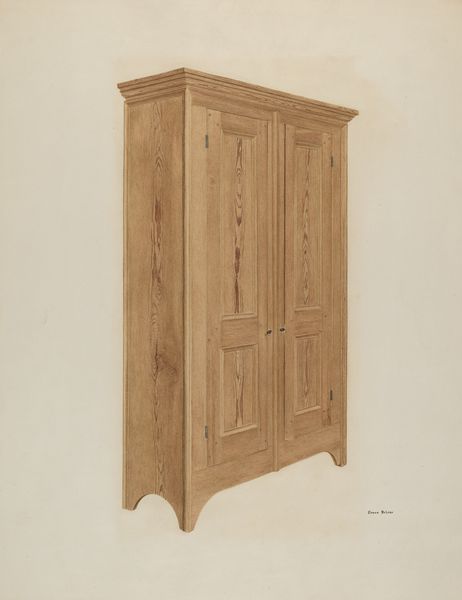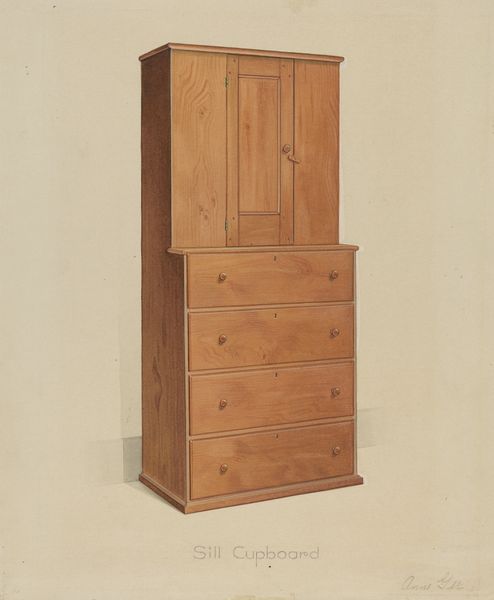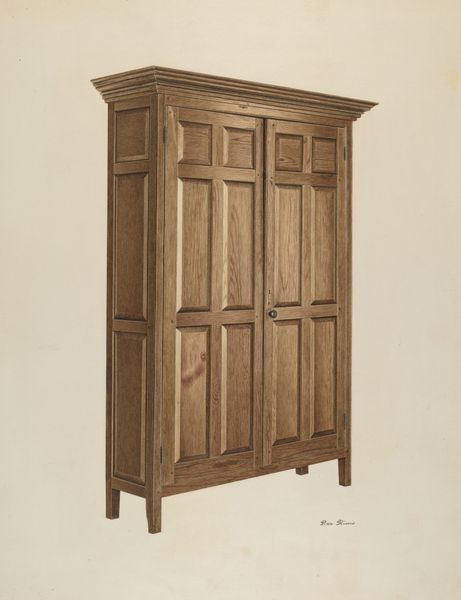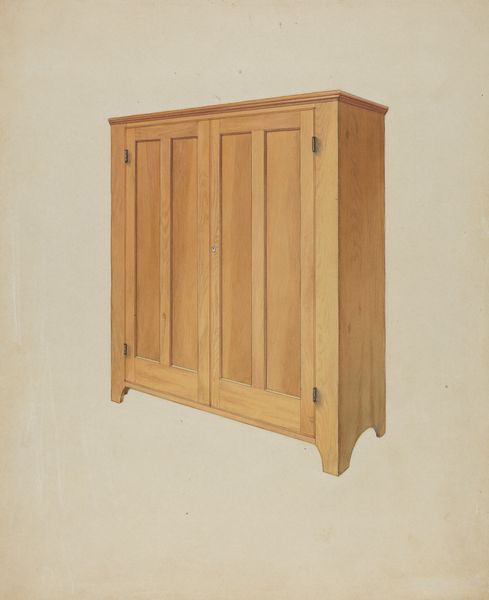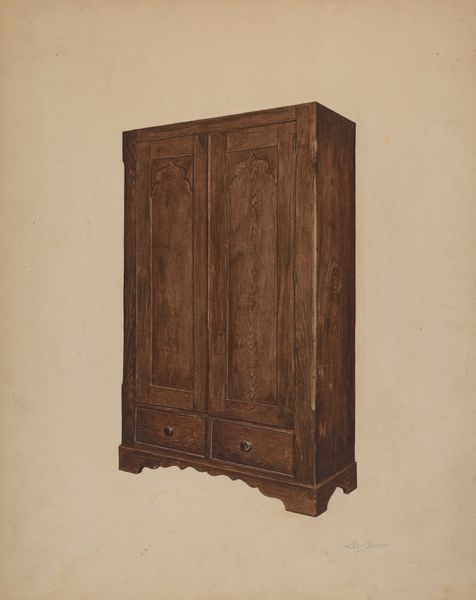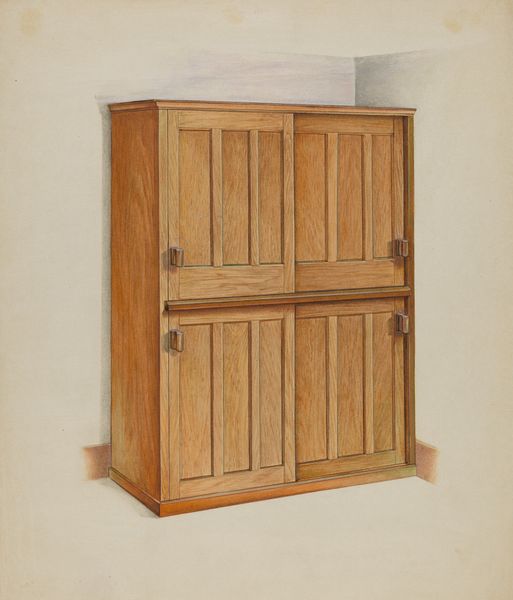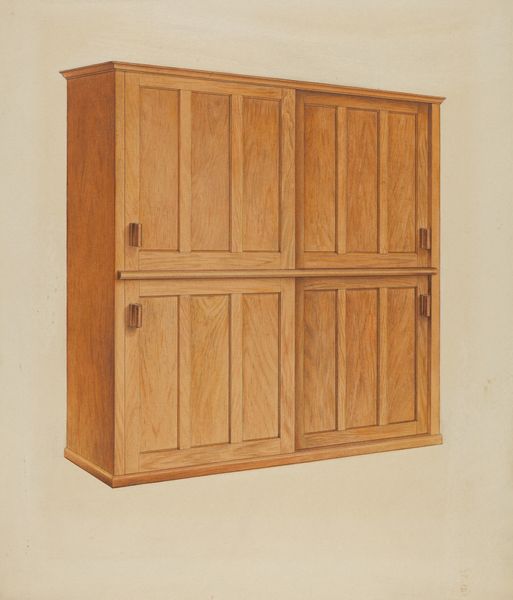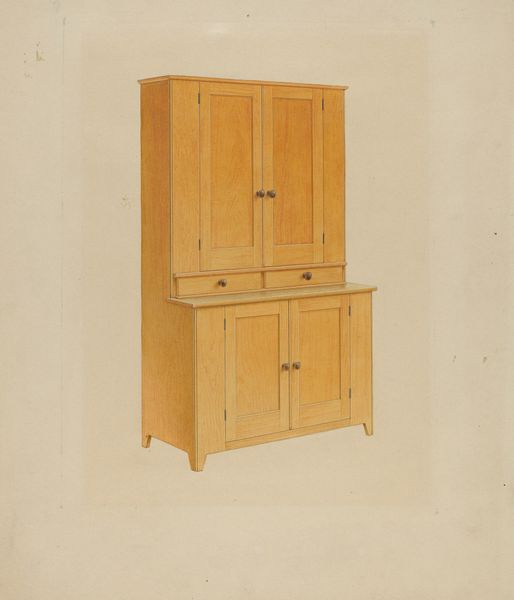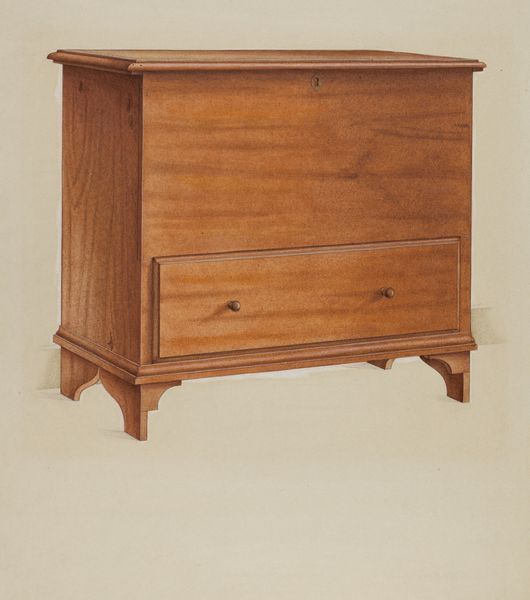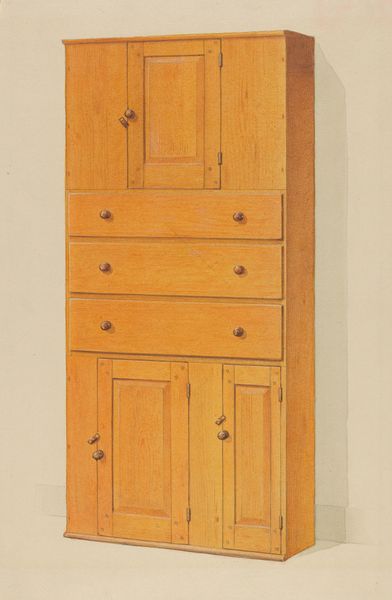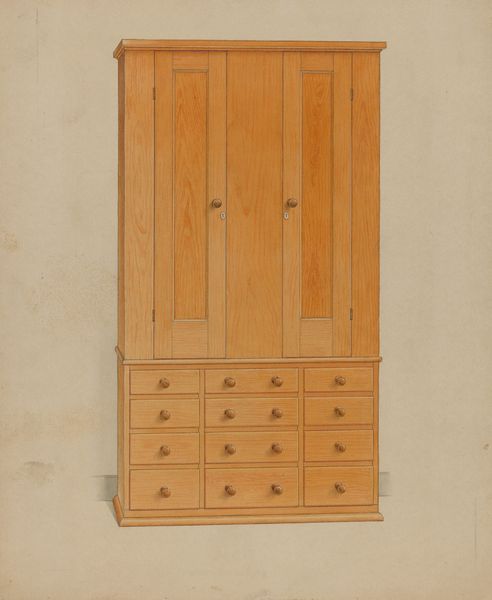
drawing, charcoal
#
drawing
#
charcoal drawing
#
charcoal
#
watercolor
#
realism
Dimensions: overall: 45.6 x 35.5 cm (17 15/16 x 14 in.) Original IAD Object: 7'high; 4'wide; 1'6"deep
Copyright: National Gallery of Art: CC0 1.0
Curator: Here we have Dorothy Johnson's "Wardrobe," created around 1940 using charcoal and watercolor. It offers us a meticulously rendered depiction of an everyday object. Editor: It’s striking in its quietude. There's an almost haunting stillness about it, as if this isn’t just a piece of furniture but a vessel of memories or secrets. Curator: Yes, wardrobes themselves often serve as silent witnesses to lives unfolding, holding not just clothing, but objects imbued with personal meaning. Its very architecture becomes symbolic, a contained world within the domestic space. Editor: Look at the materiality—the charcoal capturing the subtle grain of the wood, suggesting texture you want to reach out and touch. It prompts questions about furniture production during the era. Was this a mass-produced item, or crafted by an individual artisan? Curator: It also makes one think of what’s *inside* the wardrobe. The wardrobe in folklore, children's tales, in fairytales is often an entrance, a metaphor for transformation, for something hidden and waiting to be revealed. Think of Narnia! Editor: Absolutely, and let's not forget the social context. During this period, mass-produced furniture was becoming more accessible, democratizing design to a certain extent, while perhaps sacrificing craftsmanship. Understanding how and why this particular wardrobe was made helps ground the symbolism. The drawing makes it all seem unique again. Curator: That’s precisely the power of art, isn't it? To take the mundane and infuse it with meaning. Johnson asks us to consider our own relationship with objects we surround ourselves with daily and those intangible traces they hold. Editor: And the artist brings a specific eye. Dorothy Johnson clearly thought about the subject, using her materials and talent to remind us that humble objects can still bear an aura if our process reveals its history of labour and the human relationship to objects. Curator: Well said. It’s a drawing that reveals much more than it initially seems, both about the object itself and about our ways of seeing. Editor: It definitely made me appreciate the unseen hands and materials involved in even the most ordinary items.
Comments
No comments
Be the first to comment and join the conversation on the ultimate creative platform.

